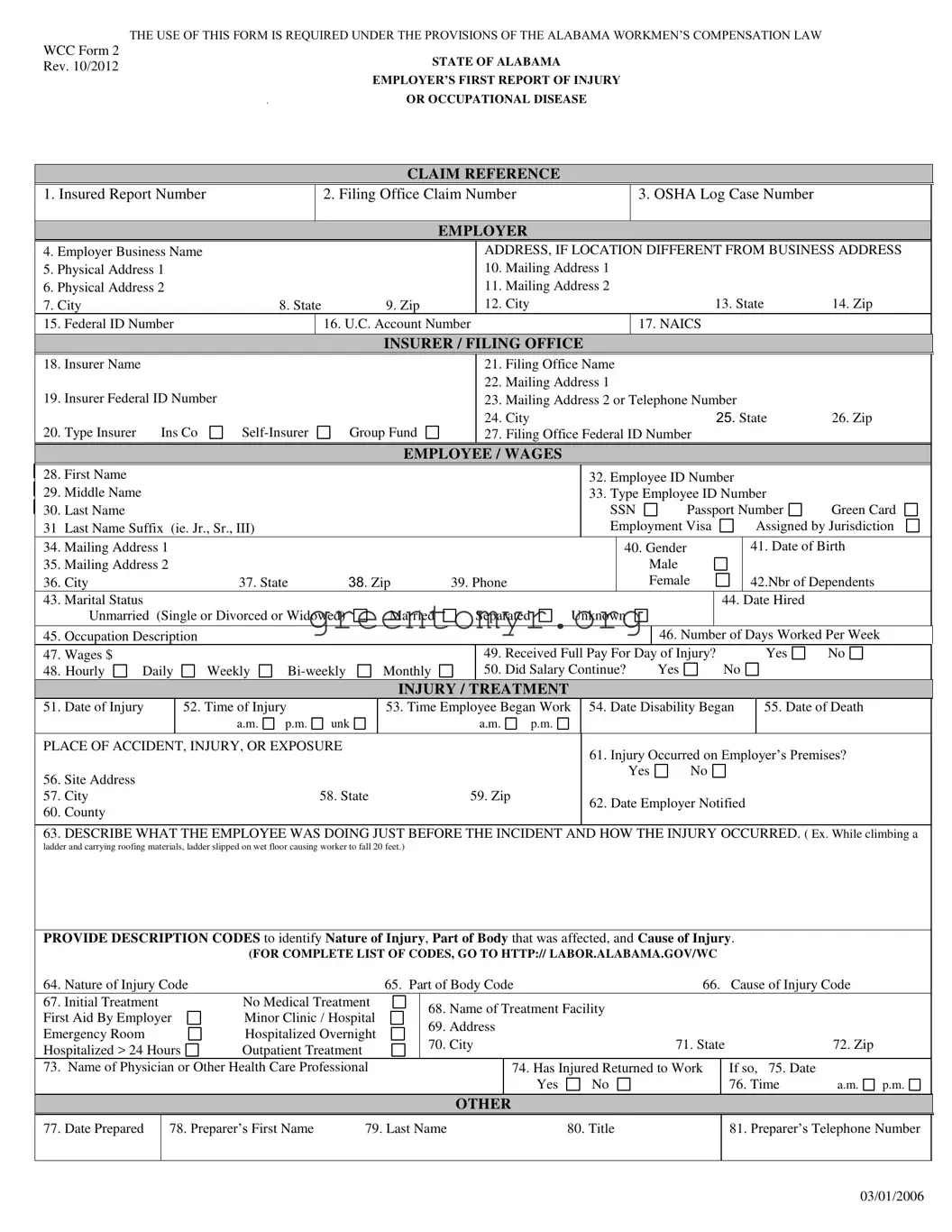When completing the Alabama First Report form, individuals often stumble upon common errors that can cause processing delays or issues down the line. A crucial mistake is failing to provide all required employer information. Missing details such as the employer's physical address or correct Federal ID number can lead to significant complications.
Another frequent oversight involves the employee's information. Inaccurately recording the employee's Social Security number or failing to include the full name can hinder the identification process. It's vital that each designation is correct. Incorrect answers to basic questions regarding the employee's position or wage can cause problems when determining eligibility for benefits.
People also often neglect to provide a clear and comprehensive explanation of the injury incident. The specifics of what the employee was doing at the time of the injury are necessary for both verification and evaluation of the claim. A vague description can result in subsequent inquiries or even denial of the claim.
Using outdated or incorrect codes for describing the nature of the injury and cause can be another pivotal error. The form requires specific injury codes, and any deviation could impair the claim’s processing. Applicants should review the official guidelines for these codes to ensure accuracy.
Additionally, many applicants forget to indicate whether the employee received full pay for the day of the injury. Marking "yes" or "no" is significant for assessing compensation eligibility. Not addressing this question can mislead the claims process and result in misunderstandings regarding wage replacement.
Atypical yet common mistakes include omitting the mailing address for necessary parties or failing to record the correct date of the accident. Each piece of information plays a crucial role, and inconsistencies can lead to delays in the claim's evaluation.
Another misstep involves not adequately specifying whether the injury occurred on the employer's premises. This is a fundamental question that impacts the claim’s validity. The answer should reflect whether the incident took place at a designated workplace location.
Many fail to document the time of the injury accurately. Both the arrival time at work and the time of injury should be clearly specified. Without these details, the timeline of the accident may seem inconsistent, raising questions from reviewers.
Lastly, individuals often neglect to provide the preparer’s contact information, including their name and telephone number. This may appear minor, but in the event of further inquiries, having a contact person linked to the report is essential for efficient communication.
Understanding and correcting these mistakes during the filing process can streamline claims and help ensure a fair assessment of workers' compensation. By carefully reviewing each section, individuals can avoid pitfalls that could lead to unnecessary complications.

